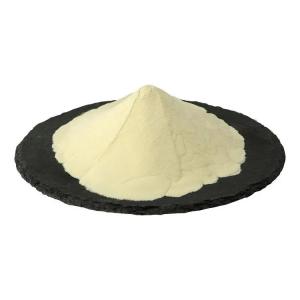The intersection of phospholipid metabolism and epigenetic regulation
Time:2025-08-20Studies on the crosstalk between phospholipid metabolism and epigenetic regulation have revealed a close link between intracellular lipid homeostasis and the regulation of gene expression. The core lies in the fact that phospholipids and their metabolic intermediates influence epigenetic processes such as chromatin structure, histone modification, and DNA methylation through various mechanisms, thereby regulating biological events including cell fate and disease occurrence.
I. Direct Regulation of Epigenetic Modifications by Phospholipid Metabolites
Numerous intermediates produced during phospholipid metabolism can act as substrates or regulatory factors for epigenetic modification enzymes, directly participating in the dynamic balance of histone modifications. For example, choline derived from phosphatidylcholine (PC) metabolism can be converted into S-adenosylmethionine (SAM) — a key methyl donor — affecting the activity of histone methyltransferases and thereby regulating the methylation levels of histone sites such as H3K4 and H3K9. Additionally, phosphorylated derivatives of phosphatidylinositol (PI) (e.g., PI3P, PI4P, PI(4,5)P2) can bind to histone deacetylases (HDACs), inhibiting their deacetylase activity, maintaining histone acetylation levels, and promoting gene transcription.
Furthermore, phosphatidic acid (PA), a core intermediate in phospholipid synthesis, can function through direct interaction with epigenetic regulatory proteins. For instance, PA can bind to and activate histone acetyltransferases (HATs), enhancing their acetylation modifications of histones H3 and H4, keeping chromatin in an open state to facilitate transcription factor binding. Meanwhile, PA may also alter chromatin structure by regulating the assembly or activity of chromatin remodeling complexes (e.g., SWI/SNF).
II. Impact of Phospholipid Metabolism on the Localization and Function of Epigenetic-Related Enzymes
Phospholipids exhibit regional specificity in their distribution on cell membranes and intracellular organelle membranes (e.g., nuclear membranes, endoplasmic reticulum membranes). This characteristic can influence the intracellular localization and functional performance of epigenetic regulatory enzymes by anchoring them. For example, phosphatidylinositol phosphates (PIPs) on the nuclear membrane can serve as anchor sites, recruiting histone-modifying enzymes (e.g., methyltransferase SUV39H1) to the vicinity of the nuclear membrane, regulating histone H3K9 trimethylation in heterochromatin regions, and maintaining genomic stability.
The endoplasmic reticulum, as the main site of phospholipid synthesis, has dynamic phospholipid metabolism on its membrane that can affect nuclear epigenetic regulation through signal transduction. For example, during endoplasmic reticulum stress, disrupted phospholipid metabolism activates the unfolded protein response (UPR), which in turn regulates the expression of epigenetic-related transcription factors (e.g., ATF4) through kinase signaling pathways (e.g., PERK-eIF2α), indirectly influencing the activity of histone-modifying enzymes.
III. Reverse Regulation of Phospholipid Metabolism by Epigenetic Regulation
Epigenetic regulation is not passively affected by phospholipid metabolism; it can also inversely influence phospholipid synthesis and degradation by regulating the expression of genes related to phospholipid metabolism. For example, histone H3K27 trimethylation can inhibit the promoter activity of key phospholipid synthesis enzymes (e.g., CDP-diglycerol synthase), reducing phospholipid synthesis. Conversely, changes in DNA methylation levels (e.g., hypomethylation of certain CpG islands) can activate the expression of phospholipase genes, promoting phospholipid degradation, forming an "epigenetic-phospholipid metabolism" feedback loop.
In addition, epigenetic modifications of transcription factors (e.g., their own acetylation or methylation) can affect their ability to regulate phospholipid metabolism genes. For instance, acetylation of the transcription factor SREBP-1c can enhance its binding to the promoters of phospholipid synthesis genes (e.g., fatty acid synthase gene), promoting the synthesis of phospholipid precursors.
IV. Physiological and Pathological Significance
The crosstalk regulation between the two plays an important role in processes such as stem cell differentiation and tumorigenesis. In stem cell differentiation, phospholipid metabolites determine the differentiation of stem cells into specific lineages by regulating epigenetic modifications (e.g., PI3P-mediated changes in histone deacetylase localization are crucial for the differentiation of neural stem cells into neurons). In tumor cells, abnormal phospholipid metabolism (e.g., accumulation of PIP3 due to activation of the PI3K/Akt pathway) can activate the expression of proto-oncogenes (e.g., MYC) by altering histone modification patterns (e.g., increased H3K4me3), promoting tumor proliferation.
Phospholipid metabolism and epigenetic regulation form a complex regulatory network through multi-level, bidirectional crosstalk. In-depth analysis of their mechanisms not only helps understand the molecular basis of cell homeostasis maintenance but also provides new potential targets for the targeted therapy of diseases (e.g., tumors, neurodegenerative diseases).


 CN
CN





